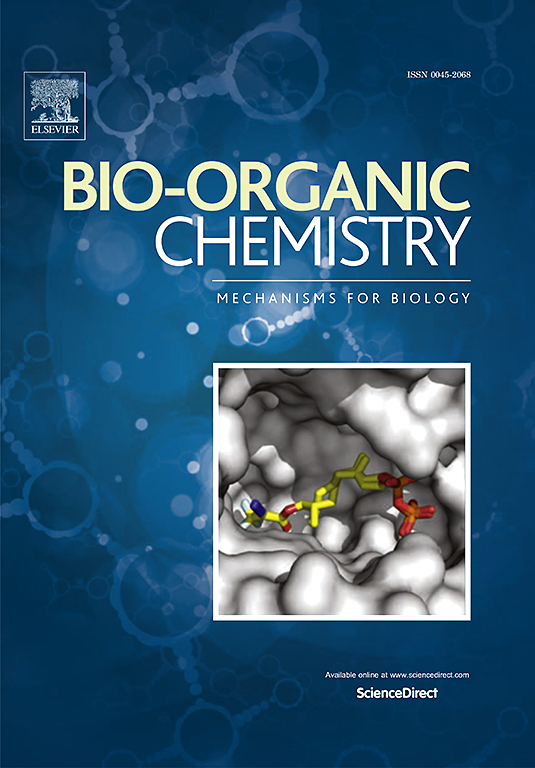Design and development of a bright NIR fluorescent probe for selective HSA detection in human blood serum and urine
IF 4.5
2区 医学
Q1 BIOCHEMISTRY & MOLECULAR BIOLOGY
引用次数: 0
Abstract
Human serum albumin (HSA), an important human blood protein, plays a critical role in maintaining osmotic pressure and facilitating the transport of various substances. Abnormal HSA levels are associated with diseases like kidney disease, heart problems, diabetes, and liver damage, necessitating the development of accurate methods for HSA detection. This paper describes the design, synthesis, and evaluation of four BODIPY-based near-infrared (NIR) fluorescent probes (BD1–BD4) for the selective detection of HSA. Among the synthesized probes, BD1 demonstrated exceptional sensitivity and specificity, exhibiting a 147-fold fluorescence enhancement at 660 nm (λex = 600 nm) with a Stokes shift of 60 nm. The probe achieved a low detection limit of 9.5 nM, enabling the effective quantification of HSA in complex biological samples such as human blood serum and artificial urine. Competitive binding studies using ibuprofen confirmed that BD1 binds selectively to binding site II of HSA, which was further supported by a molecular docking study. Additionally, BD1 demonstrated HSA detection with a high recovery rate in artificial urine.

求助全文
约1分钟内获得全文
求助全文
来源期刊

Bioorganic Chemistry
生物-生化与分子生物学
CiteScore
9.70
自引率
3.90%
发文量
679
审稿时长
31 days
期刊介绍:
Bioorganic Chemistry publishes research that addresses biological questions at the molecular level, using organic chemistry and principles of physical organic chemistry. The scope of the journal covers a range of topics at the organic chemistry-biology interface, including: enzyme catalysis, biotransformation and enzyme inhibition; nucleic acids chemistry; medicinal chemistry; natural product chemistry, natural product synthesis and natural product biosynthesis; antimicrobial agents; lipid and peptide chemistry; biophysical chemistry; biological probes; bio-orthogonal chemistry and biomimetic chemistry.
For manuscripts dealing with synthetic bioactive compounds, the Journal requires that the molecular target of the compounds described must be known, and must be demonstrated experimentally in the manuscript. For studies involving natural products, if the molecular target is unknown, some data beyond simple cell-based toxicity studies to provide insight into the mechanism of action is required. Studies supported by molecular docking are welcome, but must be supported by experimental data. The Journal does not consider manuscripts that are purely theoretical or computational in nature.
The Journal publishes regular articles, short communications and reviews. Reviews are normally invited by Editors or Editorial Board members. Authors of unsolicited reviews should first contact an Editor or Editorial Board member to determine whether the proposed article is within the scope of the Journal.
 求助内容:
求助内容: 应助结果提醒方式:
应助结果提醒方式:


